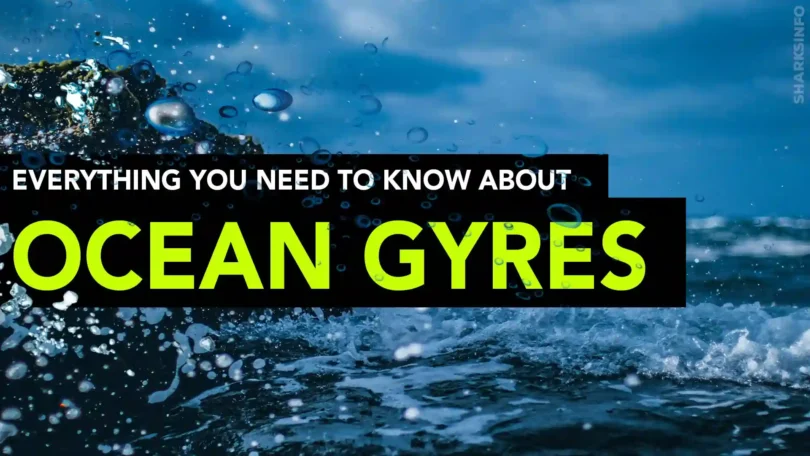Do you know where plastic is said to end up after use? It is Ocean Gyres, after all. According to research, there were 297 million pieces of plastic floating in the ocean’s waters, most of which had been collected in ocean gyres, and the majority of this plastic came from just 10 global rivers. Let’s examine a significant oceanic phenomenon that contributes to the preservation of ocean water and affects climate patterns – we shall gain in-depth information about the ocean gyres in this article.
Ocean Gyres – What Is It?
Ocean gyres are known to be the large circulating ocean currents that are found all over the globe. These ocean currents result from either the rotation of the Earth or the strong patterns of wind. Moreover, these gyres help in regulating the temperature of the planet and maintain the flow of sea salt and essential nutrients throughout the oceans.

How Are The Ocean Gyres Formed?
Well, the ocean gyres are the results of 2 types of operating forces – the Coriolis effect and the wind. The water current is pulled forward by the different patterns of wind but the rotation of the Earth, actually redirected the wind’s patterns, causing the water to swirl in a circular form. These forces also determine the size as well as the shape of the ocean gyres.
Where Are Major Ocean Gyres Located?
The world’s oceans are divided into five distinct gyres. Together, these gyres play a critical role in regulating the Earth’s functions and have a significant impact on terrestrial as well as marine life. These ocean gyres are named based on their locality:
- North Pacific Gyre
- South Pacific Gyre
- South Atlantic Gyre
- North Atlantic Gyre
- Indian Gyre
What Are The Types Of Ocean Gyres?
The ocean gyres are classified into 3 types, these are:
1: Subpolar Gyres
These gyres are formed in the polar region of the world and helped to leave the nearby coastal areas by the wind. In the Northern hemisphere, these gyres cover the nutrient-rich areas of Greenland, Iceland, and the northern regions of Scandinavia.

2: Tropical Gyres
These gyres are located close to the equator and the flow of winds in the East-West direction is the primary driver of these currents.
3: Subtropical Gyres
These gyres are formed in the equatorial and polar regions and move in a circular form providing the ocean water to sit stationary at the center. Interestingly, the majority of the ocean gyres of the planet are subtropical type.
Is There Life In The Ocean Gyres?
Well, there is not a lot of life that exists in the ocean gyres researchers have begun to fully comprehend the richness of ocean gyres. The centers of the ocean gyres are nutrient-poor and oligotrophic, because of the organic chemicals which support the existence of primary producers of the food web such as plankton or algae. Moreover, warm water typically contains considerably fewer nutrients than cold water, but researchers are contributing to warming the water of the ocean to support the life in these gyres.
What Are The Impacts Of Ocean Gyres?
Ocean gyres greatly affect the ocean and its surrounding regions, not only above the water surface but also below the ocean water. Further, it assists in regulating the nutrients towards the upper surface of the water, to help the marine species in feeding. It helps to alter climate changes, and fluctuations in the temperature, and maintain the salinity of the regions. It also carries warmth and humidity from the equator towards the higher latitudes, affecting both rainfall and temperature.
Bottom Line
Ocean gyres are circular motions in the ocean’s water that are visible and assist to keep the ocean’s water in excellent condition while also influencing the mainland. Across Planet’s surface, there are primarily five primary gyres that have a significant impact on the continents, weather conditions, and temperature.







